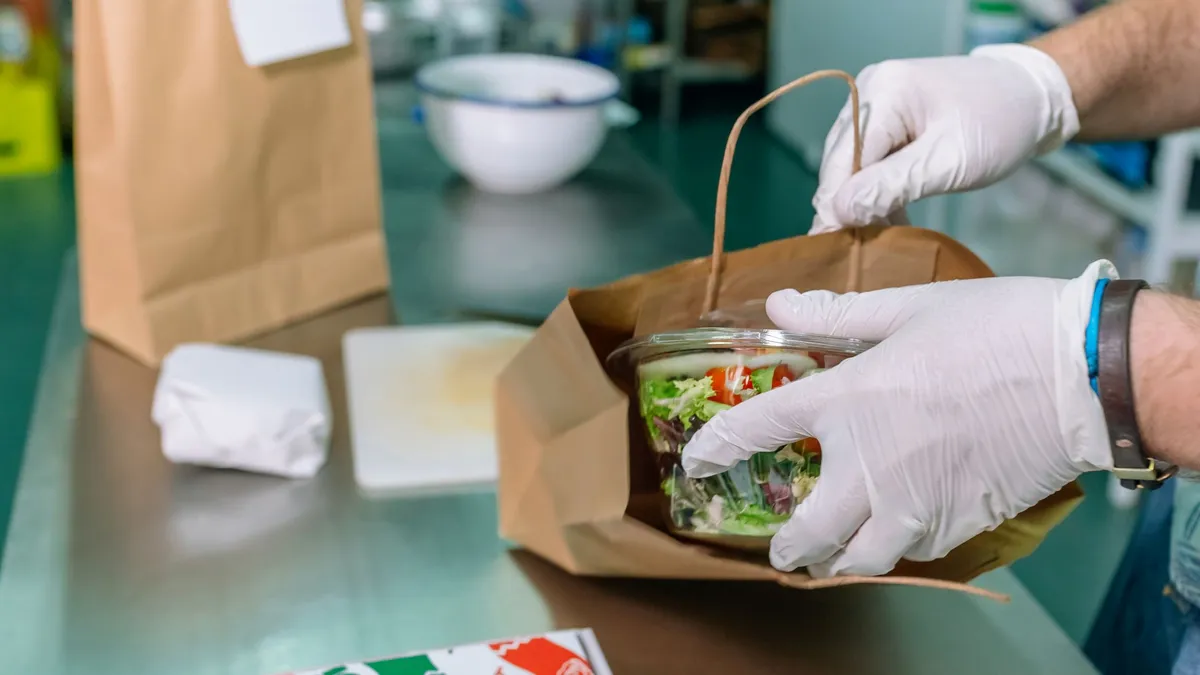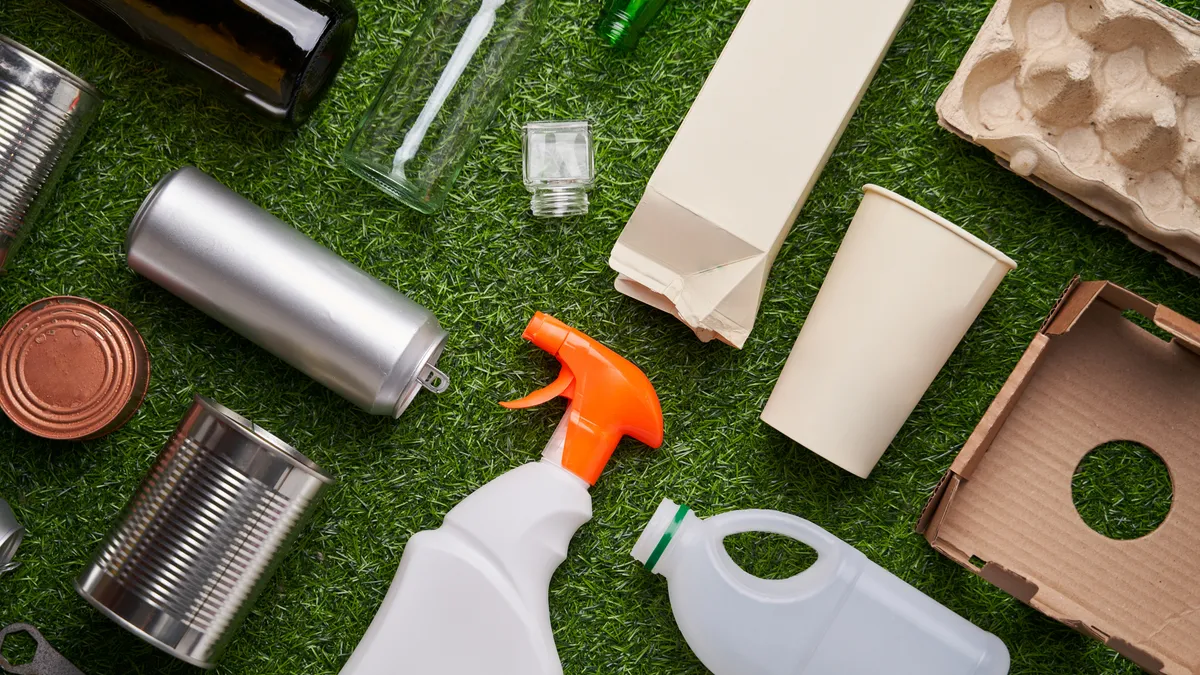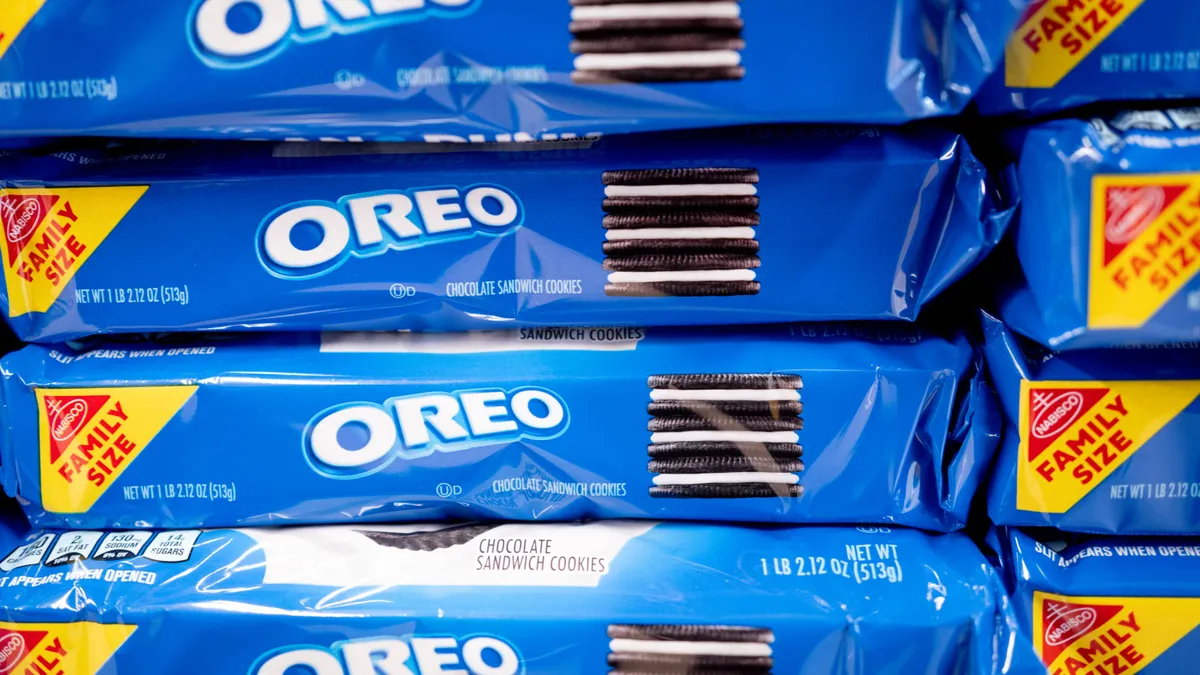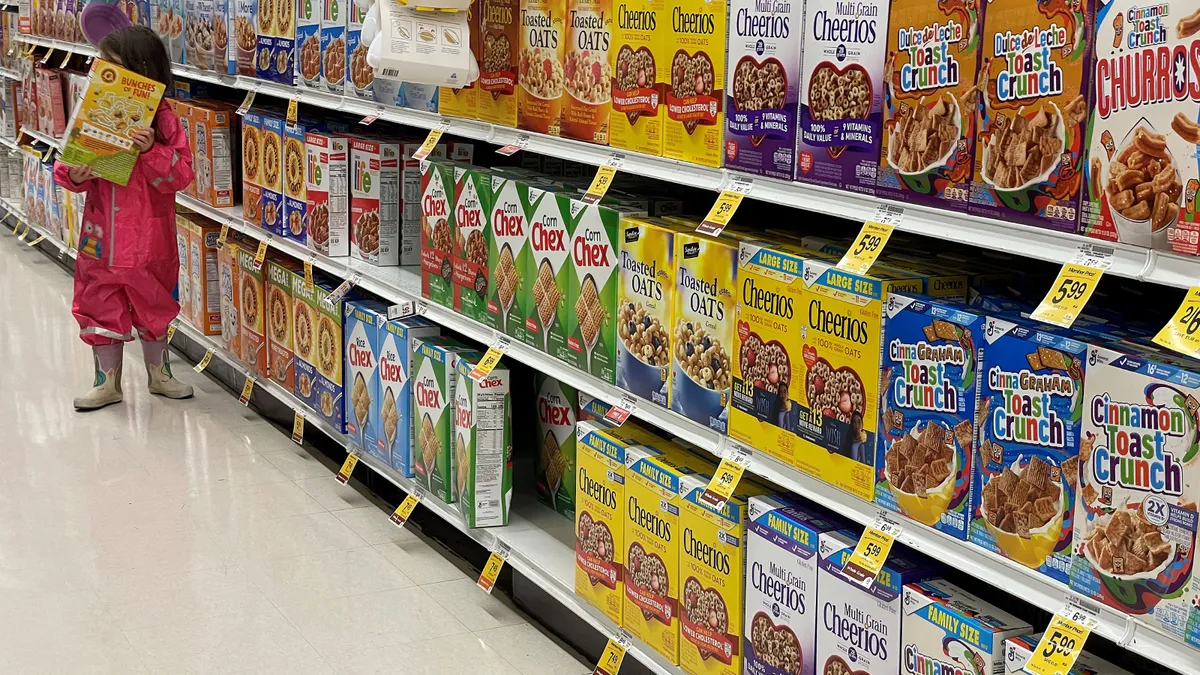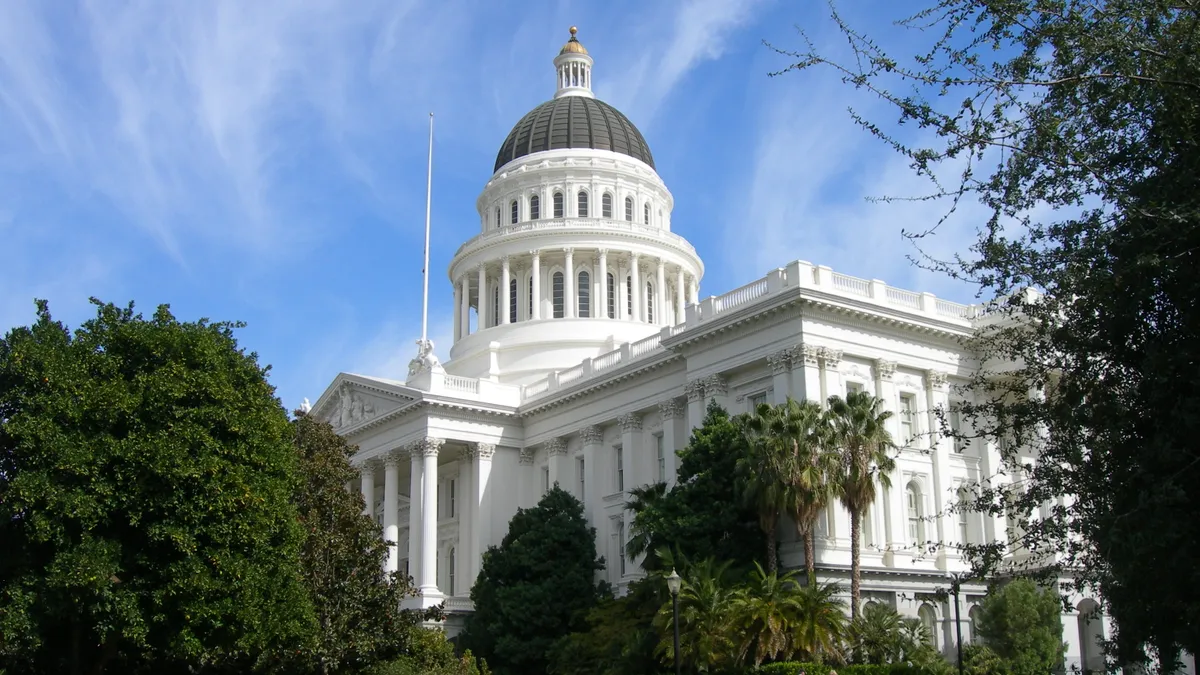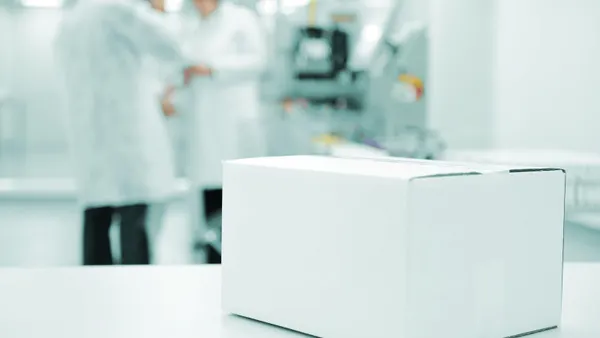2024 is poised to be a pivotal year for closing the gap on sustainability targets and advancing state extended producer responsibility programs — two areas central to Charlie Schwarze’s work in the packaging space.

Schwarze is senior director of sustainability at beverage giant Keurig Dr Pepper and board chair for the Circular Action Alliance, an industry-founded nonprofit producer responsibility organization. Like many other companies and brands, KDP set 2025 as the date for meeting multiple voluntary sustainability goals related to packaging recyclability and recycled content. Meanwhile, CAA is preparing to work more with Colorado, Maryland and potentially other states as they further develop their EPR programs.
Schwarze recently spoke to Packaging Dive about both organizations’ approaches to upcoming initiatives.
Looking to 2025 and beyond
Keurig Dr Pepper is focusing on “the last mile” of transforming not-yet-recyclable products, some of which involves challenges with labels on PET bottles.
Those are time-intensive efforts, Schwarze said, sharing an example with Snapple: The company transitioned the beverages from a heavy PET bottle with a steel lug cap and paper label to a lighter PET bottle with a recyclable plastic cap and a recycling-acceptable label made from crystallizable PET. “It takes a lot just to move the needle on a single product. And we're looking to do that at enterprise scale,” Schwarze said.
| Target | Progress as of 2022 | Goal for 2025 |
| Packaging recyclability or compostability | 90% | 100% |
| Postconsumer recycled content in packaging | 24% | 30% |
| Virgin plastic reduction across plastic packaging | 11% | 20% |
On recyclability and other packaging sustainability goals, the company’s work in 2024 will be “a marathon sprint,” Schwarze said.
KDP has pilot efforts around reusable packaging, but specific reuse targets to convert a percentage of the packaging portfolio are absent from the company’s formal goals.
“We listen to the customer very, very closely to ensure that what we put onto the market [is something] that the consumer will purchase and enjoy and come back and enjoy again,” Schwarze said. Not setting a percentage reuse target for the portfolio is “in large part because we're focused on a North American market where reuse, at least in the U.S., is not as front and center.”
What happens after 2025? “We haven't made decisions on post-2025 goals for packaging at this point,” Schwarze said. Some of the company’s other goals around sustainability are pegged to 2030. But policy momentum will likely drive a future set of packaging goals, Schwarze said. “I think it's good business as we look at the way that the consumer is expecting sustainability within the packaging that they see on the shelves in supermarkets and convenience stores.”
Securing recycled content
Keurig Dr Pepper looks years ahead at how it will procure recycled materials, Schwarze said. Recycled PET requires a strong R&D vetting process to ensure food safety and optimal aesthetics “so that the consumer doesn't see much of a difference in that package,” Schwarze explained.
In KDP’s most recent sustainability report, the company noted some challenges around availability of postconsumer recycled materials. “I think as we look across the board at companies’ sustainability goals, especially around postconsumer recycled content packaging, supply is going to be a question that every company is looking at into the future,” Schwarze said.
He said KDP’s teams say availability currently is good, but “that doesn't mean it's always going to be ready to buy off the shelf in the future.” Partnerships will be critical, going forward, to ensure availability, including through the American Beverage Association’s Every Bottle Back program on PET recycling, he said. KDP also co-founded the Polypropylene Recycling Coalition, spearheaded by The Recycling Partnership, to ensure PCR will be available for its K-Cup pods and Mott’s applesauce cups, Schwarze said.
Schwarze expects EPR will be a boon as well. “With extended producer responsibility coming online in four states in the U.S., we're going to see an increase in supply of materials which will need an outlet. So we see that as a healthy supply-demand balancing force to increase supply when we know that demand is going to be there in the future,” he said.
What’s next with EPR
Keurig Dr Pepper, one of the founding members of Circular Action Alliance alongside Amazon, The Coca-Cola Co., Unilever, Walmart and other major brand owners, remains focused on “smart policy” for EPR, Schwarze said. While the company would love to see a national approach to EPR, as it unfolds at the state level “we believe that a single producer responsibility organization that's a nonprofit is the right design.”
So far, CAA has been chosen as Colorado’s PRO and was also the only PRO named to Maryland’s EPR advisory council. Getting CAA off the ground, “it is no small feat to do what was done over the last 11 months,” Schwarze said. CAA is further anticipating California’s selection of a PRO and Colorado’s transition from a needs assessment into program and action planning, along with additional states looking at EPR.
“As we get into rulemaking in California and Colorado, I think we'll start to see some policy discussions around covered materials lists and how we do fee-setting, and in California how we look at source reduction. But it's very early stages right now, and I think we haven't gotten into a lot of those meaty topics at this point,” Schwarze said.





